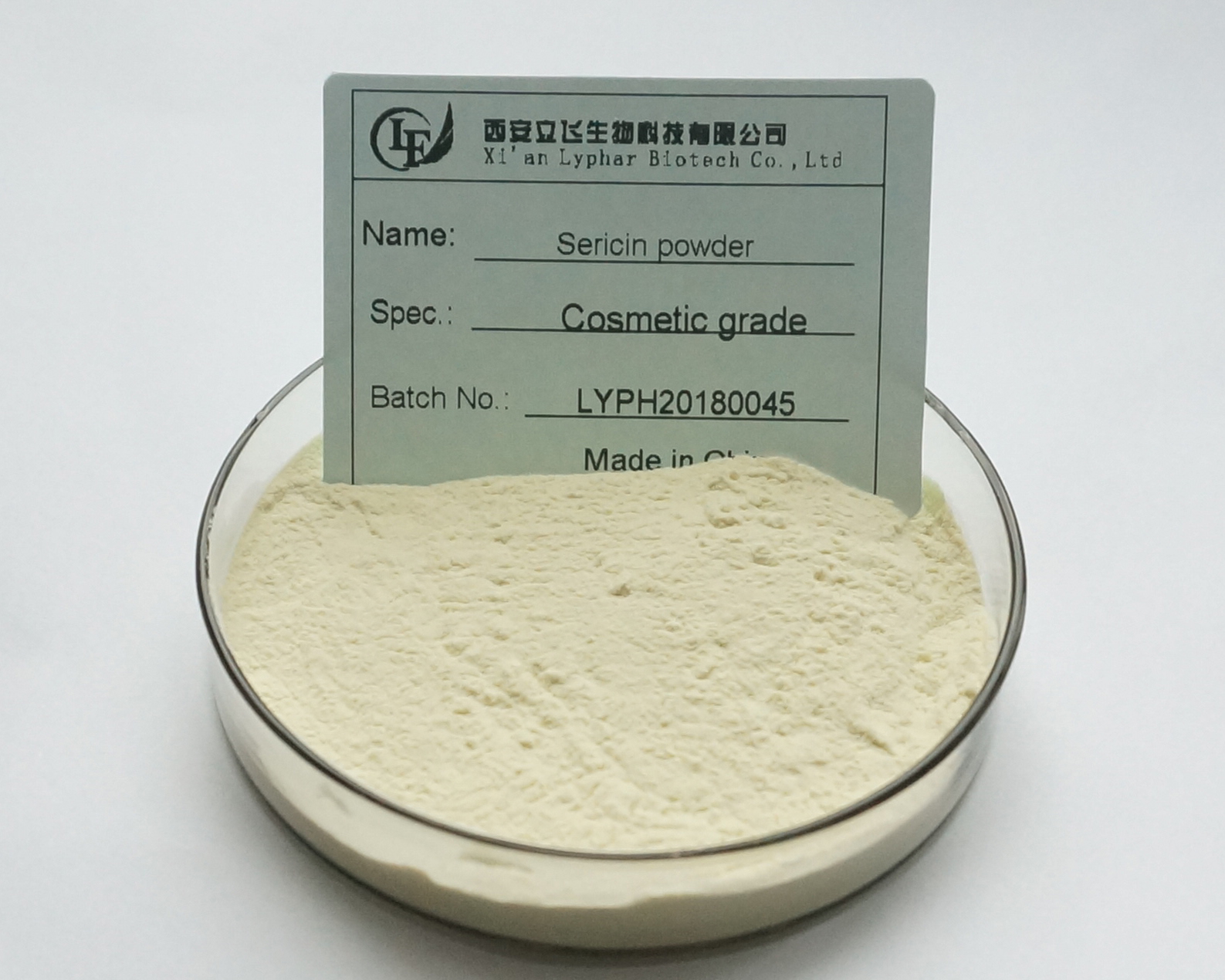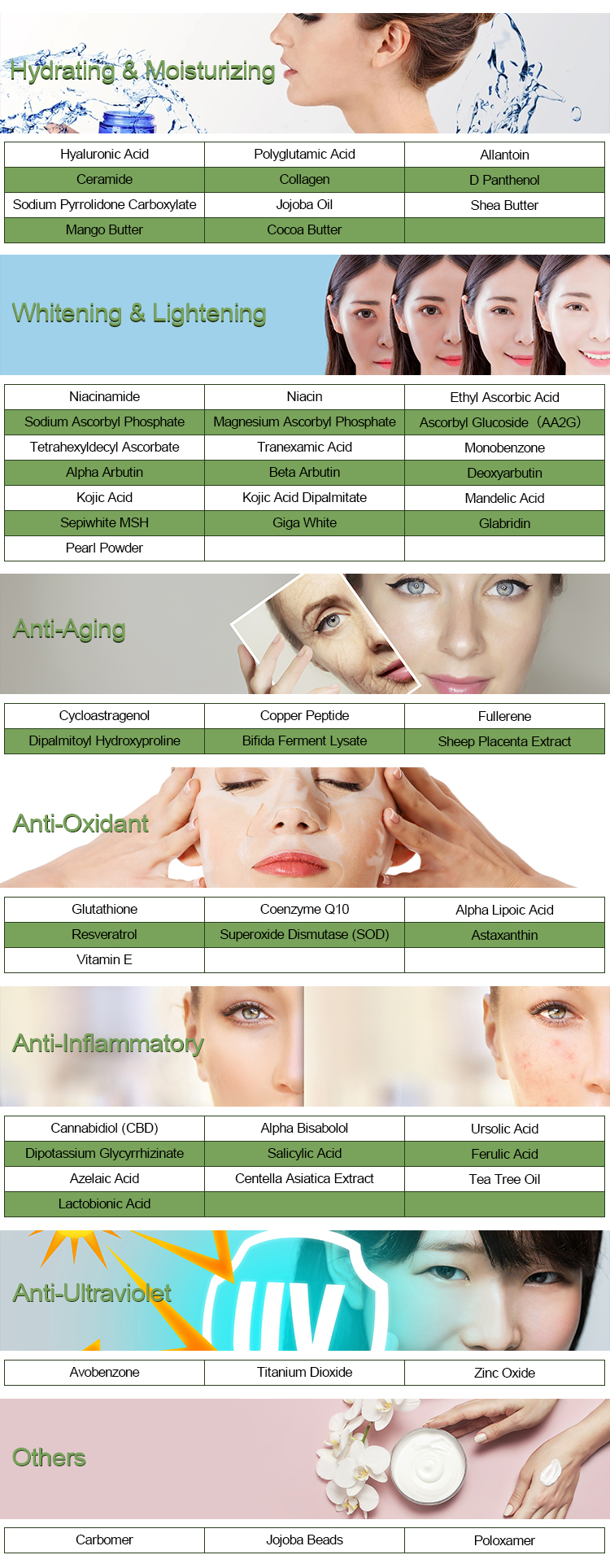Sericin is a protein found in silk produced by silkworms, primarily in their cocoons. It differs from fibroin, another protein found in silk, in that sericin is water-soluble. Here’s some information about the chemical structure and physical properties of sericin:
Chemical Structure of Sericin:
Amino Acid Composition: Sericin is primarily composed of amino acids, just like other proteins. It contains a high proportion of serine, which gives it its name, along with other amino acids such as glycine, aspartic acid, and threonine.
Molecular Weight: The molecular weight of sericin can vary depending on the source and processing, but it generally ranges from 20,000 to 60,000 Daltons.
Structure: Sericin is an amorphous protein, meaning it lacks a specific, regular secondary structure like alpha helices or beta sheets, which are common in fibrous proteins.

Physical Properties of Sericin:
Solubility: One of the most distinctive properties of sericin is its water solubility. Unlike fibroin, which is insoluble in water, sericin can be easily dissolved in water, making it suitable for various applications in the cosmetic and textile industries.
Viscosity: Sericin solutions are typically viscous, and the viscosity can vary depending on factors such as concentration and pH.
Biocompatibility: Sericin is biocompatible and has been explored for various biomedical applications, including drug delivery systems and wound healing due to its low immunogenicity.
Film-Forming Properties: Sericin has film-forming properties, and when dried, it can create a flexible, transparent film. This property is utilized in cosmetic products like hair conditioners and skincare items.
Moisturizing Properties: Sericin has the ability to retain moisture, which makes it a valuable ingredient in cosmetics for its moisturizing effects on the skin and hair.
Biodegradability: Sericin is biodegradable, which is an environmentally friendly aspect of its use in various applications.
Thermal Stability: The thermal stability of sericin can vary depending on its source and processing. Generally, it is less thermally stable than fibroin, which is known for its high heat resistance.
Biological Activity: Sericin has been reported to have some biological activities, such as antioxidant and antibacterial properties, which can be useful in various applications.
It’s important to note that the properties of sericin can vary depending on its source (different silkworm species) and how it’s extracted and processed. These properties have led to the utilization of sericin in various industries, including textiles, cosmetics, and biomedicine.
The difference between Sericin and Fibroin
Sericin and fibroin are two proteins found in silk produced by silkworms and spiders. They serve different purposes in the silk production process:
Sericin:
Sericin is a glue-like protein that holds the fibroin threads together in the silkworm’s silk gland before they are spun into a cocoon.
It is a water-soluble protein and has a sticky texture, which helps in binding the fibroin fibers together.
Sericin is removed during the processing of silk fibers, as it is not as valuable for textile production. The removal of sericin is known as degumming.
In some applications, sericin is used for its moisturizing and skin-conditioning properties in cosmetics and skincare products due to its sericin’s ability to retain moisture.

Fibroin:
Fibroin is the structural protein of silk, and it makes up the bulk of the silk thread in a cocoon.
It is a fibrous, insoluble protein that provides silk with its strength, resilience, and luster.
Fibroin is highly sought after for textile production because of its strong and lightweight properties, making it ideal for making luxurious and durable fabrics.
Silk fibers are primarily composed of fibroin, which is spun by the silkworm into a cocoon to protect the pupa during its transformation into a moth.
In summary, sericin and fibroin are two different proteins in the production of silk. Sericin is a sticky, water-soluble protein that holds the fibroin fibers together in the silk gland, while fibroin is the structural protein responsible for the strength and quality of silk threads used in textiles and other applications.
